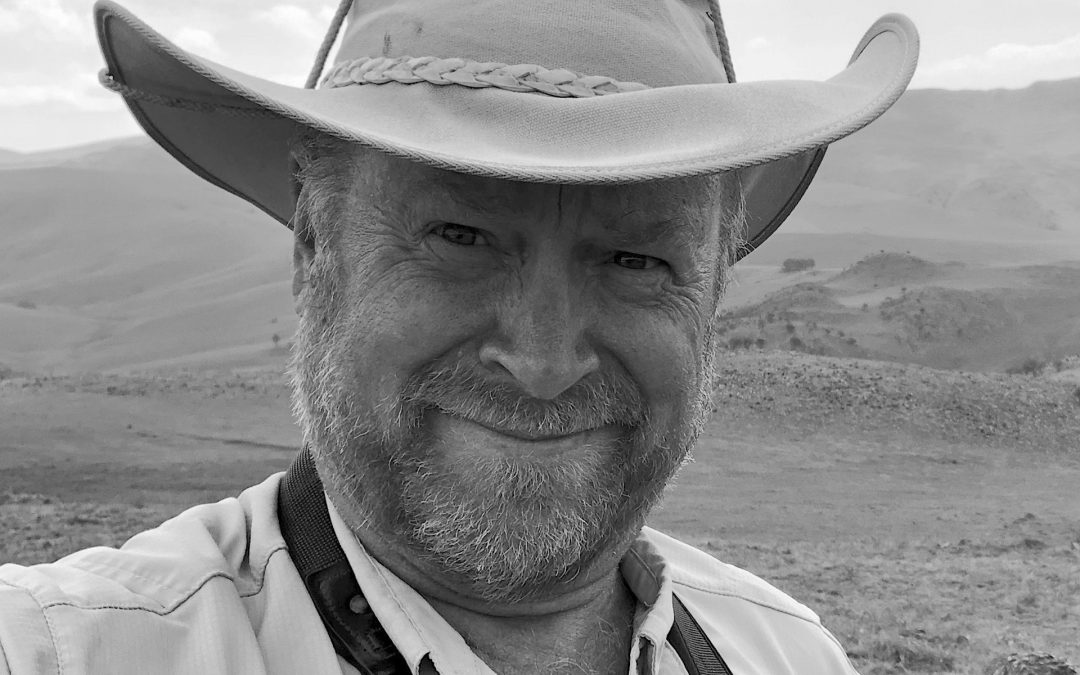Our guest today is Dr. James Christopher Haney, a conservation biologist, wildlife researcher, and author of more than 250 peer-reviewed journal articles, technical reports, and science summaries. His career trajectory spans the arc of conservation and extinction and we are going to talk about both these topics today. Dr. Haney’s latest book, “Woody’s Last Laugh: Ivory-billed Woodpecker as Trickster,” features how that bird came to fool our heads for so long, leading us into various mental mistakes due to the high uncertainty over the bird’s ultimate fate. In this episode, we discuss this and other ideas, including the “Romeo error,” a condition in which we get bird extinctions wrong (thinking that species are dead when they aren’t). We discuss the ivory-bill, but also other examples of bird species from around the world (including one or two from India) that went missing for a very long time, but then were re-found.
Video of the episode on Youtube here and embedded below.
Dr. Haney has delivered 150 research and public speaking engagements to national and international audiences. Haney was a coauthor of the “Top 40 Priorities for Science to Inform U.S. Conservation and Management Policy.” For expertise in advising the Exxon Valdez Oil Spill Trustee Council, a cross-governmental coalition charged with restoring marine environments of south-central Alaska, he received an Outstanding Contributions as a Peer Reviewer Award in 2000, and an Outstanding Service Award in 2002. In 2010, the U.S. Fish & Wildlife Service invited him to lead what was at the time the largest-ever vessel survey of marine birds in the Gulf of Mexico in order to help document injuries to wildlife that were caused by the Deepwater Horizon blow-out and oil spill. Following 15 years of interdisciplinary research, Dr. Haney discovered how and why conservation makes faulty decisions in his new book: “Woody’s Last Laugh – How the ‘Extinct’ Ivory-billed Woodpecker Fools Us into Making 53 Thinking Errors”
Official Bio
Chris’ interest in all things related to natural history, environmental conservation, and wildlife arose at an early age. Starting with a first-grade teacher who was also a bird-bander, Chris found means to blend academic interests with a keen appreciation for spending as much time as possible in the outdoors.
Dr. Haney majored in Biology and minored in Chemistry at Southern University (B.Sc.; 1981). He was graduate trained at the University of Georgia’s Department of Zoology, Institute of Ecology, and at the Skidaway Institute of Oceanography (Ph.D.; 1986). As a recent post-graduate investigator, he was research biologist with the Department of Interior’s U.S. Fish & Wildlife Service, and LGL Alaska Research Associates, Inc., in Anchorage, Alaska. He was subsequently awarded a Pew Marine Policy Fellowship at the Woods Hole Oceanographic Institution where he focused study on island conservation, international fisheries management, environmental security and risk, and applications of the social sciences to marine resource protection (1989-1992). He served on the wildlife faculty in the School of Forest Resources, The Pennsylvania State University, from 1992 to 1995. From 1995-2001, Dr. Haney was forest ecologist in the Ecology and Economics Research Department of the Wilderness Society, and for 12 years Chief Scientist at Defenders of Wildlife, both in Washington, DC.
At the invitation of the U.S. Department of State, Dr. Haney collaborated in the Bering Sea with the Russian Academy of Sciences, Shirshov Institute of Oceanology, and Institute of Nature Protection and Reserves. He was independently selected for the core science review team for the Exxon Valdez Oil Spill Trustee Council, a consortium of three federal and three state natural resource agencies monitoring the long-term recovery and restoration of marine ecosystems and biota in Alaska. For those services, Dr. Haney received an Outstanding Contribution as a Peer Reviewer Award in 2000, and an Outstanding Service Award in 2002. The U.S. Dept. of State invited Dr. Haney to teach incoming diplomats a short training course on environmental and economic impacts of oil spills at the Washington Energy Seminar in 2010. The same year, the U.S. Fish & Wildlife Service invited Dr. Haney to lead the largest pelagic study of marine birds ever conducted in the Gulf of Mexico following the Deepwater Horizon oil blowout. For three years he directed the Nature Conservancy’s prestigious David H. Smith Conservation Research Fellowship Program, the nation’s first post-doctoral program ever devoted solely to applied conservation biology. Currently Dr. Haney is Founder and President of Terra Mar Applied Sciences, LLC, a firm he launched in 2013 for independent conservation-oriented research carried out in the public interest.
Dr. Haney’s expertise straddles the fields of marine science, climate change, wildlife biology, ecosystem management, and conservation policy. His projects and scholarly work have taken him to Mexico, Guatemala, Belize, Jamaica, Dominican Republic, Puerto Rico, Cuba, the Bahamas, Lesser Antilles, several countries of southern Africa, and the former Soviet Union. He has authored over 80 peer-reviewed journal articles, book chapters, and technical notes, over 150 reports, abstracts, testimony, blog communications, and other public documents, and delivered more than 150 invited seminar, conference, and workshop presentations. His work has been featured in such outlets as BioScience, Conservation Biology, Natural History, Ecological Economics, Limnology and Oceanography, Conservation-in-Practice, Forest Ecology and Management, Marine Biology, Auk, Condor, Wilson Bulletin, Marine Policy, Marine Ecology-Progress Series, Natural Areas Journal, Archives of Environmental Toxicology and Contamination, and Regional Environmental Change. Current address: Terra Mar Applied Sciences, LLC, 1304 Rittenhouse Street NW, Washington, D.C. 20011; 702-970-TMAS (8627); e-mail; [email protected].
Questions
- Let’s start with one of your early papers. You listed 40 priorities for conservation. Can you mention one or two as it applies to birds?
- You have researched oil spills and bird mortality. For those who don’t know, can you lay out the learnings?
- You led a prestigious aspect of the Nature Conservancy. Can you talk about its approach and what works, what doesn’t, especially for developing countries in Asia and Africa?
- Moving to your latest work, I would love to start with the Romeo error. What is it exactly?
- When you heard about the ivory billed woodpecker going extinct, you laughed. Why? Can you also compare the ivory-billed story to the other birds that went extinct– as in why did the Passenger pigeon, Carolina Parakeet and others go extinct. (page 24)
- What’s so special about this bird?
- Talk about the mental models that come to mind because of this bird.
Chris talks about the mental model errors that we make, that can affect birding and scientific ornithology both (easily illustrated with examples from the world of birds) include: availability cascade, observancy expectancy effect, anchoring bias, negativity bias (this is excellent as an example, as it related directly to our view of bird extinctions).
8. Your projects and scholarly work have taken him to Mexico, Guatemala, Belize, Jamaica, Dominican Republic, Puerto Rico, Cuba, the Bahamas, Lesser Antilles, several countries of southern Africa, and the former Soviet Union. Can you talk about any of the birds that you met there?


